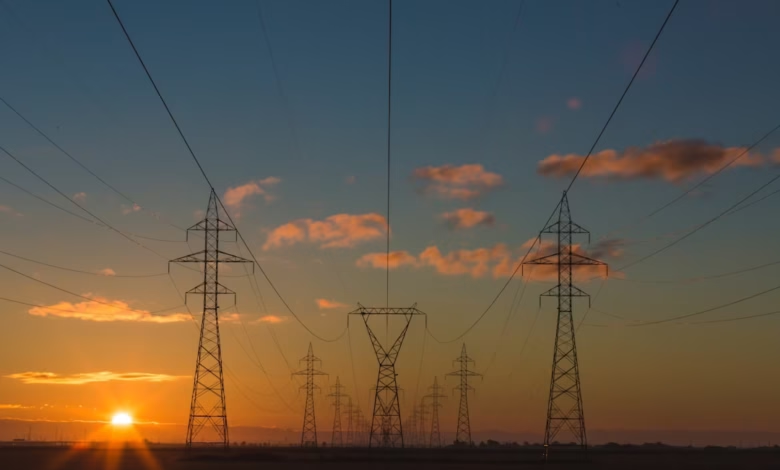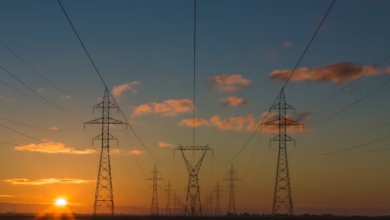How Energy Choices Shape Our Climate Future: The Role of Renewables and Innovations in Combating Global Warming

As the world grapples with the urgent challenge of climate change, the role of energy has never been more critical. Energy choices not only shape our daily lives but also significantly influence the health of our planet. With fossil fuels still dominating global energy markets, the need for a transition to renewable energy sources such as solar power, wind energy, and hydropower is evident. This article delves into the intricate relationship between energy and climate change, examining how our energy decisions impact environmental sustainability. We will explore the benefits of transitioning from fossil fuels to green energy, highlighting innovations in energy storage and smart grids that pave the way for a more sustainable future. Additionally, we will discuss global energy trends and policy initiatives aimed at enhancing energy efficiency, promoting carbon capture technologies, and bolstering energy security. By understanding these dynamics, we can better grasp how energy investments and innovations are essential in combating global warming and ensuring a resilient planet for future generations.
- 1. The Impact of Energy Choices on Climate Change: Understanding Fossil Fuels vs. Renewable Energy
- 2. Innovations in Energy Storage and Smart Grids: Paving the Way for a Sustainable Energy Transition
- 3. Global Energy Trends and Policy: Strategies for Energy Efficiency and Carbon Capture in the Fight Against Global Warming
1. The Impact of Energy Choices on Climate Change: Understanding Fossil Fuels vs. Renewable Energy
The choices we make regarding energy production and consumption significantly impact climate change. Understanding the differences between fossil fuels and renewable energy sources is crucial in this context. Fossil fuels, such as coal, oil, and natural gas, have long been the backbone of global energy markets, providing a substantial portion of the world's energy needs. However, their combustion releases high levels of carbon dioxide and other greenhouse gases, which are major contributors to global warming. As countries strive to meet international climate goals, reducing reliance on fossil fuels is imperative.
In contrast, renewable energy sources like solar power, wind energy, hydropower, and bioenergy offer cleaner alternatives that can help mitigate the effects of climate change. These green energy solutions harness natural processes to generate power without emitting harmful pollutants. For example, solar power and wind energy have seen significant advancements in energy efficiency and cost-effectiveness, making them increasingly competitive in energy markets.
The transition to renewable energy is not just an environmental necessity but also an economic opportunity. Energy investments in renewable technologies can stimulate job creation and drive innovation in energy R&D. Furthermore, the integration of smart grids and energy storage solutions enhances energy efficiency and reliability, enabling a more resilient energy infrastructure. This transition also includes exploring options like hydrogen energy, which presents a promising avenue for energy storage and transportation.
Nuclear energy remains a contentious but important player in the energy transition. While it provides substantial low-carbon energy, concerns about safety and waste management persist. Nevertheless, when coupled with carbon capture technologies, nuclear power could play a critical role in reducing emissions and achieving energy security.
As nations navigate energy policy and investment strategies, understanding global energy trends and the dynamics of energy exports and imports is essential. The shift towards distributed energy systems encourages local production and consumption, further enhancing energy security and supporting the energy transition.
Ultimately, the path to combating climate change hinges on making informed energy choices. By prioritizing renewable energy development and adopting innovative solutions like thermal energy and electric vehicles, we can significantly reduce our carbon footprint and pave the way for a sustainable future.
2. Innovations in Energy Storage and Smart Grids: Paving the Way for a Sustainable Energy Transition
Innovations in energy storage and smart grids are central to the transition towards a sustainable energy future, particularly in combating climate change. As we move away from fossil fuels and embrace renewable energy sources like solar power, wind energy, and hydropower, the need for efficient energy storage solutions becomes crucial. Energy storage technologies, such as batteries and pumped hydro storage, allow us to capture excess energy produced during peak generation times and release it when demand is high, enhancing energy efficiency and reliability.
Smart grids are another transformative element in this energy transition. By integrating advanced technologies with the existing power grid, smart grids facilitate real-time monitoring and management of energy flows. This innovation not only optimizes the distribution of renewable energy but also supports the integration of distributed energy resources, such as rooftop solar panels and electric vehicles. As a result, energy markets can become more resilient and responsive to changing demand and supply dynamics.
Furthermore, energy storage systems can play a pivotal role in stabilizing energy security. By providing backup power and balancing intermittent renewable sources, these systems reduce reliance on traditional fossil fuels and nuclear energy, ultimately lowering carbon emissions. With ongoing energy R&D, advancements in thermal energy and hydrogen energy storage are also emerging, offering new pathways for cleaner energy solutions.
The global energy trends indicate a significant shift towards green energy investments, with many countries reforming their energy policies to support this transition. For instance, carbon capture technologies are being integrated into energy systems to mitigate the environmental impact of energy production. As nations focus on enhancing energy exports and imports through sustainable means, the role of smart grids and innovative energy storage solutions will be paramount in achieving a successful energy transition that aligns with climate goals.
In summary, the innovations in energy storage and smart grids are paving the way for a more sustainable energy future. By enabling the efficient use of renewable energy and enhancing energy security, these technologies are essential in the fight against climate change and in creating a stable, resilient energy landscape.
3. Global Energy Trends and Policy: Strategies for Energy Efficiency and Carbon Capture in the Fight Against Global Warming
The fight against global warming hinges significantly on the evolving landscape of global energy trends and policies aimed at enhancing energy efficiency and promoting carbon capture technologies. As nations grapple with the pressing realities of climate change, a multifaceted approach that includes a shift towards renewable energy sources, improved energy storage solutions, and innovative energy policies has become essential.
Energy efficiency is a cornerstone strategy in reducing greenhouse gas emissions. By optimizing energy use in buildings, transportation, and industrial processes, we can significantly lower our reliance on fossil fuels. Implementing smart grids enables better management of electricity distribution, facilitating the integration of green energy sources like solar power and wind energy. Such advancements not only enhance energy security but also pave the way for a more resilient energy market.
In addition to energy efficiency, carbon capture technologies play a crucial role in mitigating the impact of fossil fuels on the environment. These innovations allow for the extraction and storage of carbon dioxide emissions generated from industrial activities and power generation, particularly in thermal energy and fossil fuel plants. By investing in carbon capture and storage (CCS) projects, countries can transition to cleaner energy systems while still utilizing existing fossil fuel infrastructure.
The energy transition is further supported by the rise of offshore energy projects and advancements in hydrogen energy technologies. Offshore wind and hydropower facilities are becoming increasingly prominent, showcasing the potential for large-scale renewable energy investments. Moreover, hydrogen energy, particularly green hydrogen produced through electrolysis using renewable sources, holds promise for decarbonizing sectors that are challenging to electrify, such as heavy industry and transportation.
Energy markets are also adapting to these shifts. With the growing importance of distributed energy systems and electric vehicles, energy policy must evolve to support innovations that encourage sustainable practices. Policymakers are now focusing on energy exports and imports strategies that favor clean energy technologies, enhancing global energy economics while contributing to climate goals.
In conclusion, the strategies for energy efficiency and carbon capture are pivotal in the global response to climate change. By leveraging renewable energy, embracing innovative technologies, and fostering supportive energy policies, we can create a sustainable energy future that not only addresses the challenges of global warming but also enhances energy security and economic resilience.
In conclusion, the role of energy in combating climate change is more critical than ever. The choices we make regarding fossil fuels and renewable energy directly influence global temperatures and the health of our planet. As we shift towards greener energy solutions, innovations in energy storage, smart grids, and energy efficiency are paving the way for a sustainable energy transition. Embracing diverse energy markets, including solar power, wind energy, and hydropower, alongside advancements in nuclear energy and bioenergy, can significantly reduce our carbon footprint.
Global energy trends show a clear need for effective energy policy that prioritizes energy security and promotes investments in clean technologies, such as carbon capture and electric vehicles. By fostering energy R&D and supporting distributed energy systems, we can enhance our resilience against climate change while ensuring energy imports and exports contribute positively to the global economy.
Ultimately, the path to a sustainable future lies in our collective commitment to innovative energy solutions. By prioritizing renewable energy and embracing energy innovations, we can create a healthier planet for generations to come. The fight against climate change is not just an environmental imperative but also an economic opportunity that can drive progress and prosperity in the energy sector.





